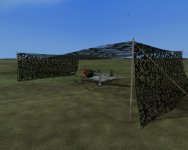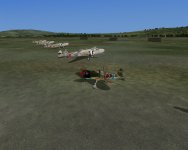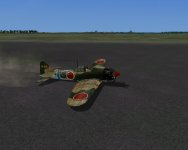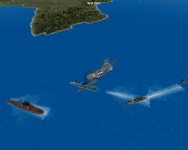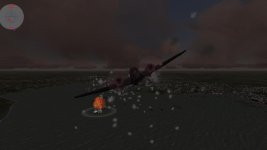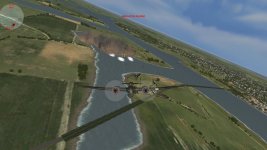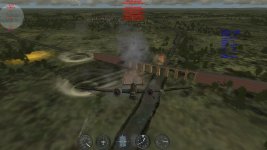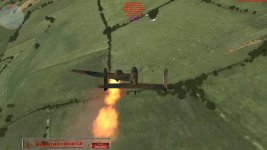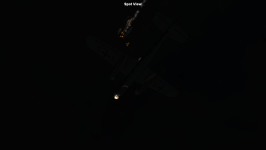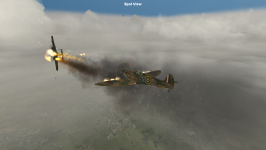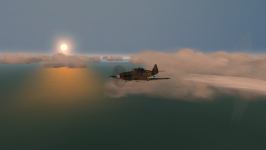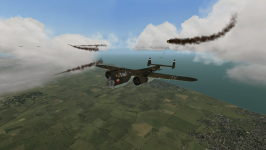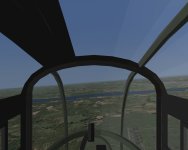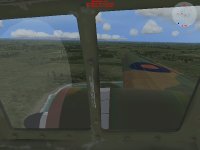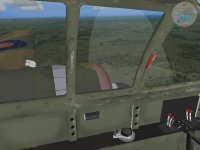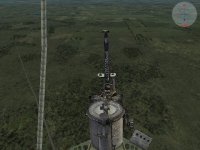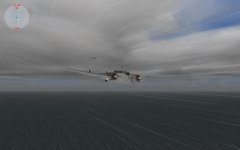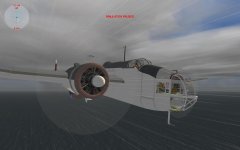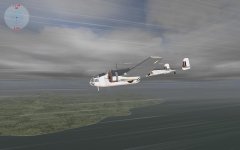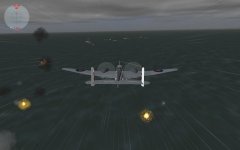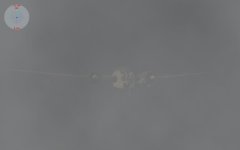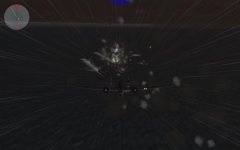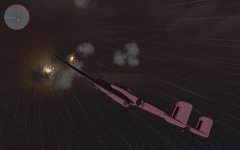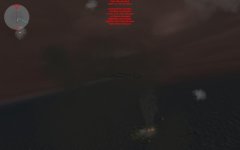Hi Jeff,
The Hampdens do have a bomb aimer position and a VC constructed from the Baltimore II VC (kind permission from Steve to use it)
I think you might have an older build of the planes (Hobbit send him the new ones

). I built up the xdp files and fitted out the bombaimer and VC positions but removed the gunners as they are not operating positions. your xdp files should have the following descriptions if you have the latest version of CC and BC planes.
regards Rob.
Handley Page Hampden TB Mk1
=====================================
Unit: 517 Squadron Coastal Command.
Serial: AT-225
Code: E
St Eval airbase,
Cormwall,
England.
August 1943.
A total of 226 Hampdens were in service with ten squadrons by the start of the Second World War, with six of these squadrons forming the operational strength of 5 Group of Bomber Command based in Lincolnshire. Despite its speed and agility, in operational use, the Hampden was no match for Luftwaffe fighters. Consequently, its career as a day bomber was brief, but Hampdens continued to operate at night on bombing raids over Germany, and mine-laying (code-named 'gardening') in the North Sea and the French Atlantic ports.
After being withdrawn from Bomber Command in 1942, it operated with RAF Coastal Command through 1943 as a long range torpedo bomber, (the Hampden TB Mk I with a Mk XII torpedo in an open bomb bay and a single 500 lb bomb under each wing) and as a maritime reconnaissance aircraft. No. 144 Squadron RAF and No. 455 Squadron RAAF were involved in the escort of Arctic Convoy PQ-18 operating from Soviet airbases and left their 23 aircraft in the USSR afterward. These were then used by the 3rd Squadron of the 24 MTAP (Anti shipping Wing) of the Soviet Navy until at least 1943. The Hampden was also used by the RCAF and the RNZAF.
No. 517 Squadron was formed on 11 August 1943 at RAF St Eval, Cornwall when 1404 Meteorological Flight was renumbered. It was equipped with Lockheed Hudsons and Handley Page Hampdens, which it flew daily out into the Atlantic to collect meteorological data. Between September and November 1943 four United States Army Air Forces Flying Fortresses were temporary attached to the squadron, awaiting the arrival of adapted Handley Page Halifaxes. By November 1943 the squadron had reequipped with the Halifax and then moved to RAF St David's in Wales. Two further moves followed, one to RAF Brawdy in February 1944 and then after the war to RAF Chivenor where the squadron was disbanded on 21 June 1946.
A total of 1,430 Hampdens were built: 500 by Handley Page, 770 by English Electric and in Canada by the Canadian Associated Aircraft consortium (although some were retained in Canada, 84 were shipped by sea to the United Kingdom).
Almost half of the Hampdens built, 714, were lost on operations with 1077 crew killed and another 739 missing. German flak is believed to have accounted for 108 aircraft and 214 others were classed as failed to return. Luftwaffe pilots claimed 128 Hampdens, with 92 shot down by night fighters. Finally, 263 Hampdens were written off through a variety of crashes and incidents.
Handley Page Hampden Mk1
=====================================
Unit: 49 Squadron RAF.
Serial: P1333
Code: EA-F
Fiskerton airbase,
England.
August 1940.
No. 49 Squadron received the first Hampdens in September 1938. By the end of 1938 both 49 and 83 Squadron at RAF Scampton had re-equipped.
A total of 226 Hampdens were in service with ten squadrons by the start of the Second World War, with six of these squadrons forming the operational strength of 5 Group of Bomber Command based in Lincolnshire. Despite its speed and agility, in operational use, the Hampden was no match for Luftwaffe fighters. Consequently, its career as a day bomber was brief, but Hampdens continued to operate at night on bombing raids over Germany, and mine-laying (code-named 'gardening') in the North Sea and the French Atlantic ports.
Flight Lieutenant Rod Learoyd of 49 Squadron was awarded the Victoria Cross for the attack that he led on the Dortmund-Ems aqueduct on 12 August 1940. Sergeant John Hannah was the wireless operator-air gunner of an 83 Squadron Hampden, he was awarded the Victoria Cross on 15 September 1940 when he fought the flames of the burning aircraft, allowing the pilot to return it to base. Guy Gibson spent most of the first two years of his wartime service flying Hampdens, and his book Enemy Coast Ahead gives a strong flavour of the trials and tribulations of taking these aircraft into action.
A total of 1,430 Hampdens were built: 500 by Handley Page, 770 by English Electric and in Canada by the Canadian Associated Aircraft consortium (although some were retained in Canada, 84 were shipped by sea to the United Kingdom).
Almost half of the Hampdens built, 714, were lost on operations with 1077 crew killed and another 739 missing. German flak is believed to have accounted for 108 aircraft and 214 others were classed as failed to return. Luftwaffe pilots claimed 128 Hampdens, with 92 shot down by night fighters. Finally, 263 Hampdens were written off through a variety of crashes and incidents.


 very nice and perfect timing for Christmas
very nice and perfect timing for Christmas